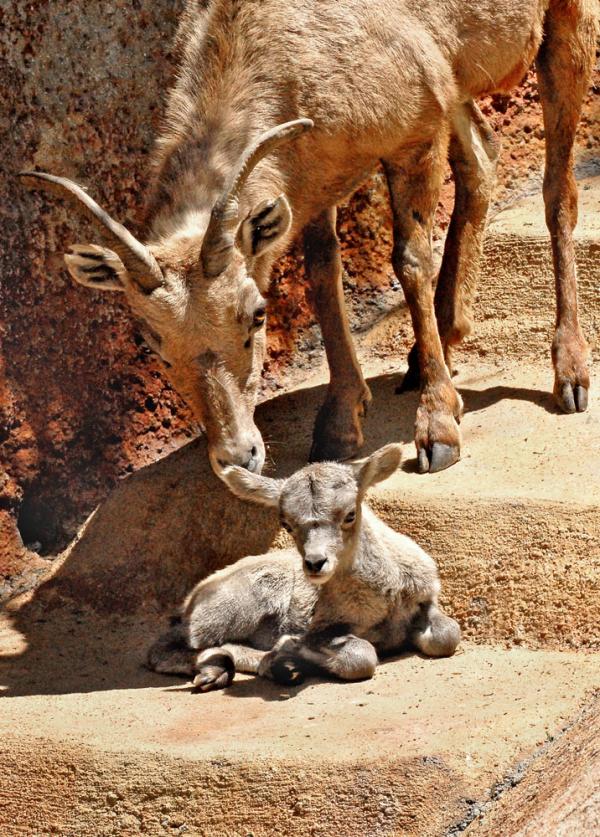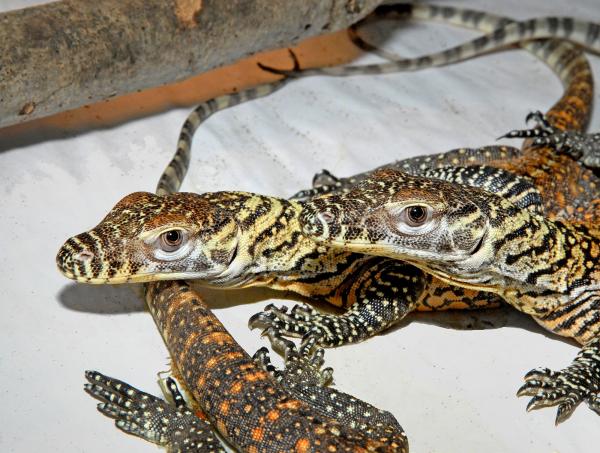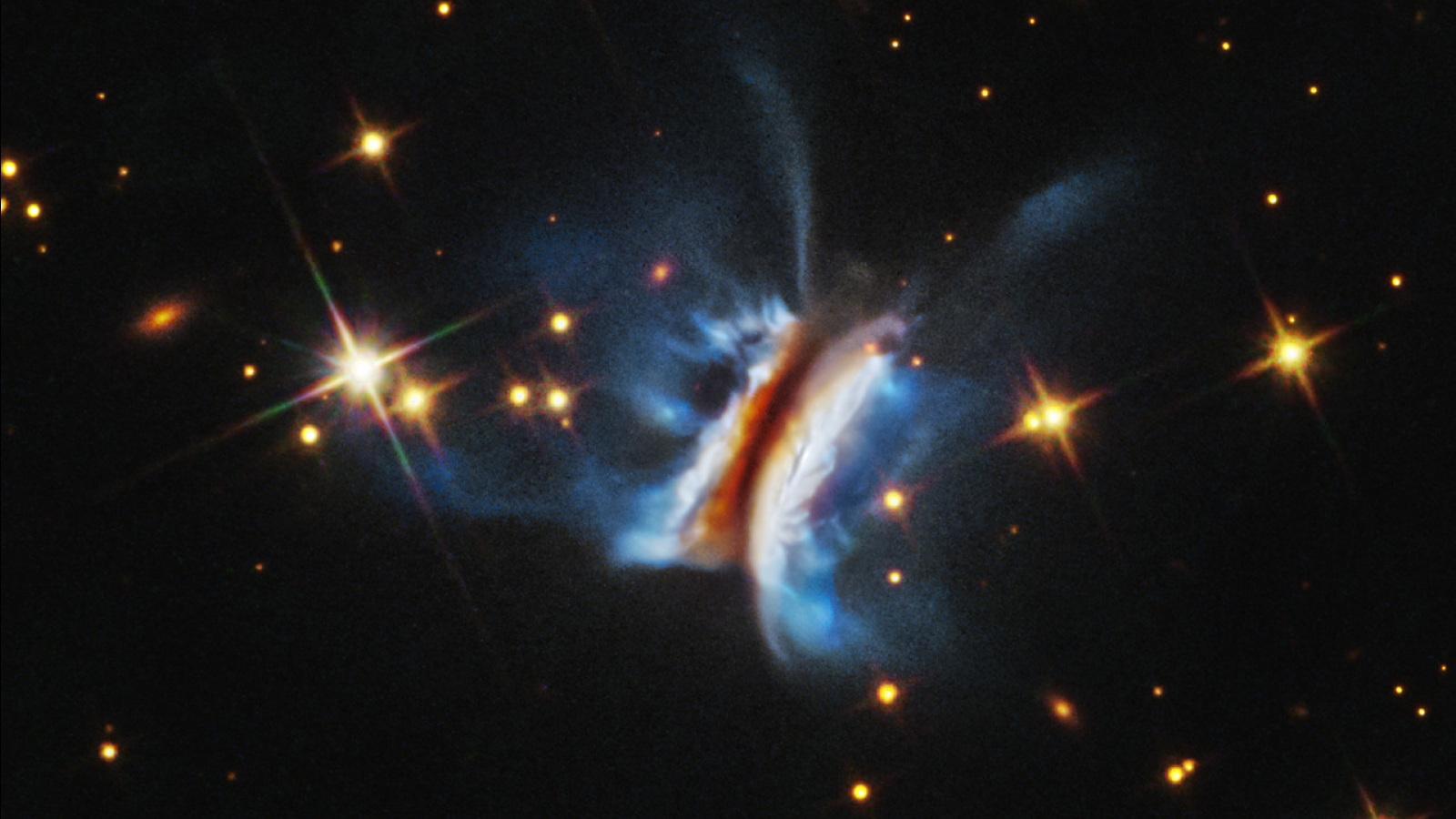
Bouncing Zoo Babies of 2010
January Western Lowland Gorilla Baby

In zoos all over the world this year, little bundles of joy were brought into the world, causing zoo-goers to coo. From the furry to the scaly to the underwater dwellers, OurAmazingPlanet takes a look at a few of the cuties that joined the animal kingdom in 2010.
On Jan. 10, a baby western lowland gorilla was born at the Smithsonian's National Zoo. Staff estimate the baby was born at approximately 1:45 pm to 26-year-old female Mandara and 16-year-old Baraka. The newborn represented the seventh successful gorilla birth for the Zoo since 1991.
In this image, taken on Feb. 2, 2009, the great ape keepers at the zoo let Mandara and her 3-week-old baby outside to enjoy the mild weather.
February Clouded Leopard Cubs

A clouded leopard at the Smithsonian's National Zoo's campus in Front Royal, Va., gave birth to a genetically valuable litter of two cubs on Valentine's Day Sunday, Feb. 14.
The breeding of clouded leopards has been a challenge, primarily due to male aggression, decreased mating activity between paired animals and high cub mortality.
Little is known about clouded leopards. They are native to Southeast Asia and parts of China in a habitat that ranges from dense tropical evergreen forests to drier forest.
March - Capybara Babies

These two furry critters are called capybaras. Capybaras (Hydrochaeris hydrochaeris) are the world's largest rodents, measuring about 3.5 to 4.5 feet long, and they live a semi-aquatic lifestyle in areas near lakes, rivers, swamps, ponds and marshes in much of South America.
Get the world’s most fascinating discoveries delivered straight to your inbox.
Mother capybara Courtney gave birth to five babies at the Akron zoo on March 24. Two of the babies died during birth and a third died after a surgery to repair its hip, which was dislocated during birth. Mortality of capybara babies is typically high.
April - Desert Bighorn Sheep

On Monday, April 26, 2010, a female desert bighorn sheep was born at the Los Angeles Zoo.
Desert bighorn sheep are native to the high mountains and deserts of the south western United States and northern Mexico. Preferring to reside in places with rocky terrain and access to water, they completely avoid forested areas. In the wild, a herd is comprised of females and their lambs. When the males reach the age of two, they separate from the herd and set off by themselves in bachelor groups.
As male desert bighorn sheep mature, they develop massive spiraled horns that may add up to one-third of their total body weight. Females have much smaller horns. However, both sexes have excellent vision and hearing as well as an innate ability for climbing rugged terrain.
May - Amur Tiger Cubs

A trio of male Amur tiger cubs were born at the Bronx Zoo in May. The trio were the first Amur tiger cubs born at the zoo in more than a decade.
Three Malayan tiger cubs were also born at the zoo this year. Amur and Malayan are two of the six surviving subspecies of tiger.
June - Kiwi Chick

The National Zoo held a naming contest for a Kiwi chick born on June 15. When the votes came in, the little bird was dubbed Areta (AH-reh-tah). The name is M?ori the language of New Zealand 's native people and means "of noble kind."
Areta is one of the first kiwis to be bred in captivity in the United States. Kiwis in captivity are very rare only four zoos outside of New Zealand have been able to breed the birds.
Kiwis (Apteryx mantelli) are small, flightless birds unique to New Zealand.
July Black-footed Ferrets Kits

Twelve litters of black-footed ferrets, a species once nearly extinct, were born at the Smithsonian National Zoo this year. The litter pictured here came into the world on July 23.
In total, 50 kits, the term for baby ferrets, were born this year, and 49 have survived. The sizes of the litters this year were larger than those in previous years.
Black-footed ferrets once lived in the short- and middle-grass prairies of the western Great Plains. Today, they are an endangered species as a result of disease and a 98-percent loss of the North American prairie ecosystem.
August - Komodo Dragon Hatchlings

Starting on Aug. 8 and continuing for the next 11 days, 22 Komodo dragons hatched at the Los Angeles Zoo.
On Jan. 22, 2010, Lima, the Zoo's female Komodo dragon, laid 23 eggs. Less than 10 zoos in North America have been able to breed Komodos; these hatchings marked the L.A. Zoo's first success at breeding them.
Hatchlings are 14 to 20 inches (36 to 51 centimeters) long and weigh about 3 to 4 ounces (85 to 113 grams). Komodos, the world's largest lizard, can grow to approximately 9 feet (3 meters), weighing up to 200 pounds (90 kilograms) or more. They are confined to a small set of islands in Indonesia .
September Lion Cubs

A whole pride of lion cubs joined the Smithsonian National Zoo in August and September.
On Aug. 31, lioness Shera gave birth to four cubs, three females and one male, which have now been named John, Fahari, Zuri and Lelie. Her sister Nababiep gave birth to three cubs, two males and one female, of her own on Sept. 22. They have been dubbed Baruti, Aslan and Lusaka.
Lion Luke is the father to all seven cubs, which could make their debut in the lion's outdoor yard soon, weather permitting.
October Baby Pied Tamarins

These baby pied tamarins were born at Durrell Wildlife Conservation Trust in the U.K. in mid-October.
Sadly, one of their siblings did not survive, but the other two were reportedly doing well. A long hand-rearing process, during which the keepers fed the babies with formula milk every two hours around the clock, has insured that both tamarins are doing well.
The pied tamarin (Saguinus bicolor) is a primate species found in a restricted area in the Brazilian Amazon Rainforest and is thought to be one of the most endangered monkeys in the Amazon.
November - Panda Cub

It may not look like it, but this teeny guy will one day grow into a Giant Panda. The cub, confirmed to be a boy, was the only Giant Panda cub born in the United States this year, making his a particularly notable birth.
The boy, who will not be named until he is 100 days old, following Chinese custom, was born to Zoo Atlanta's 13-year-old panda Lun Lun on Nov. 3.
Lun Lun and the cub will debut to the public sometime in spring 2011. Before then, catch mom and son on the zoo's PandaCam, Monday through Friday from 10 a.m. to 5 p.m. EDT.
 Live Science Plus
Live Science Plus






